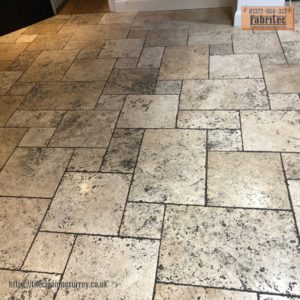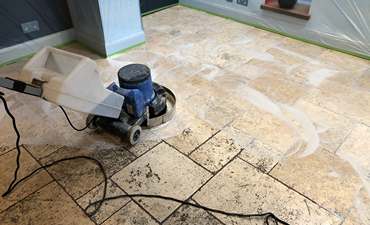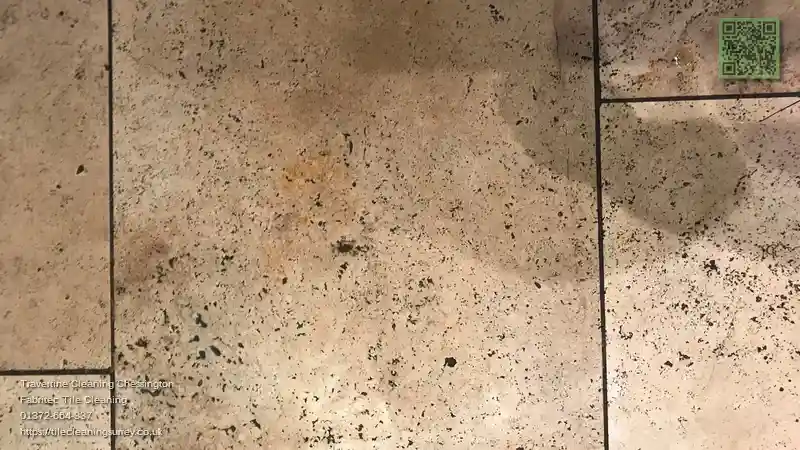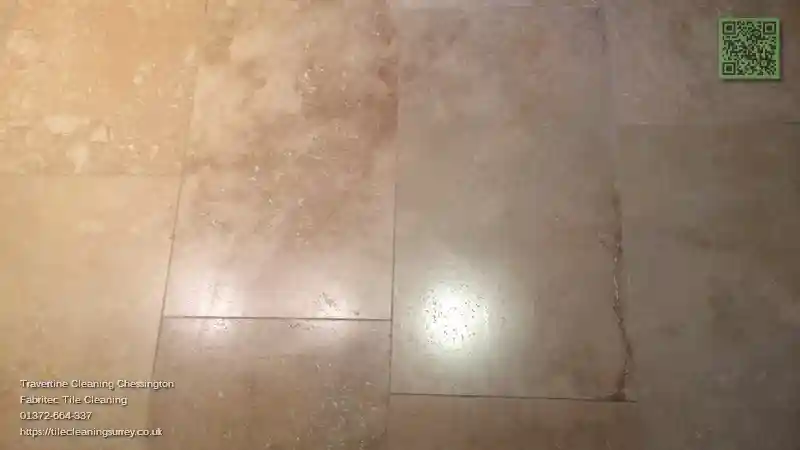Comprehensive Guide to Restoring the Beauty of Your Travertine Floors
Travertine floors are highly esteemed for their sophisticated appearance and enduring allure, making them a favored choice among homeowners seeking to enhance their living spaces. Nevertheless, the inherent porousness of travertine can lead to various challenges, including the buildup of dirt, unsightly stains, and a gradual loss of shine. Standard cleaning practices may fall short, leading homeowners to ponder several essential questions:
- What proven techniques can I utilize to restore my travertine's original luster?
- Which specialized cleaners are most effective for maintaining travertine floors?
- How do professionals ensure the safe cleaning of travertine surfaces without causing damage?
- Is it essential to seal my travertine floor, and how often should this be performed?
If you struggle to maintain the pristine condition of your travertine surfaces, seeking professional assistance may be the best solution. At Fabritec Tile Cleaning, we specialize in rejuvenating travertine floors to restore their original splendor. In the following sections, we delve into our professional cleaning process and provide valuable insights that will enable you to care for your travertine floors with confidence and ease.
Recognizing the Unique Maintenance Requirements of Travertine
Travertine is a distinctive variety of limestone that naturally develops small holes and voids during its formation. While these characteristics contribute to the unique visual appeal of travertine, they also make it highly absorbent. This property requires specialized care to preserve the stone's aesthetic and extend its lifespan.
Recognizing Common Issues Faced by Travertine Floors
- Dirt and grime accumulation: The porous nature of travertine allows dust and debris to become trapped, leading to floors that appear dirty and unkempt.
- Etching and dullness: Prolonged exposure to acidic substances like lemon juice or vinegar can cause surface damage that diminishes its shine.
- Cracking and chipping: The pressure from foot traffic or exposure to moisture can weaken the stone, resulting in cracks.
- Mold and mildew formation: Moisture-prone areas, particularly in bathrooms, kitchens, and outdoor pavers, can become breeding grounds for mold and mildew.
Using inappropriate cleaning methods can worsen these issues, making professional deep cleaning and sealing essential for the upkeep of your travertine floors.
Step-by-Step Process for Expert Travertine Cleaning

At Fabritec Tile Cleaning, we employ a thorough, multi-step approach to effectively restore the natural beauty of travertine surfaces.
1. Detailed Evaluation and Inspection of the Travertine Floor
The process of professional cleaning begins with a comprehensive evaluation of the travertine surface. Our skilled team assesses:
 Stains and discoloration
Stains and discoloration Cracks, chips, or missing grout
Cracks, chips, or missing grout Areas with significant dirt buildup
Areas with significant dirt buildup Signs of moisture damage or mold growth
Signs of moisture damage or mold growth
This initial inspection enables us to create a custom cleaning plan tailored to the unique conditions of your floor, ensuring optimal results.
2. Use of pH-Neutral Cleaning Solutions for Pre-Treatment
Before initiating deep cleaning, we apply a specially formulated pH-neutral stone cleaner. Unlike standard floor cleaners, this solution is designed to dissolve dirt and stains while protecting the stone from damage.
Benefits of pH-Neutral Cleaners
- They prevent etching and dullness that can occur with harsh chemicals.
- They penetrate deeply into the stone's pores to effectively remove dirt.
- They leave no harmful chemical residues that could compromise the stone's integrity.
3. High-Performance Deep Cleaning with Advanced Equipment

Once the cleaner has loosened dirt and grime, we utilize rotary scrubbing machines equipped with soft-bristle brushes to extract embedded debris effectively. These cutting-edge machines:
 Safely remove deeply ingrained dirt without scratching the surface.
Safely remove deeply ingrained dirt without scratching the surface. Access the stone’s pores for a thorough clean.
Access the stone’s pores for a thorough clean. Ensure consistent cleaning across the entire floor area.
Ensure consistent cleaning across the entire floor area.
For detailed areas or delicate surfaces, we utilize hand scrubbing techniques to prevent any potential damage.
4. Customized Stain Removal Strategies for Different Stain Types
In instances of stubborn stains, we employ targeted stain-removal strategies tailored to the specific type of stain.
Professional Techniques for Stain Removal from Travertine
- Organic stains (such as food, coffee, or tea): Handled with hydrogen peroxide-based poultices for effective extraction.
- Oil-based stains (like grease or cosmetics): Treated with a baking soda paste to absorb and eliminate the stain.
- Rust stains: Removed using specialized rust removers formulated specifically for natural stone surfaces.
- Water spots and mineral deposits: Dissolved with a gentle stone-safe descaler to prevent damage.
5. Comprehensive Cleaning and Restoration of Grout Lines
Unsightly grout lines can detract from even the most beautifully maintained travertine floor. We utilize steam cleaning techniques along with professional-grade grout brushes to thoroughly remove grime from the grout lines.
When grout is cracked or missing, we perform grout repair and recoloring to restore a cohesive and uniform appearance, enhancing the overall aesthetic.
6. Thorough Rinsing and Removal of Residual Cleaning Agents
Upon completion of the cleaning process, we rinse the entire surface thoroughly using high-pressure water to eliminate any remaining cleaning agents or loosened dirt. A wet vacuum is employed to extract excess moisture, ensuring a swift drying process.
7. Expert Repair of Cracks, Holes, and Surface Imperfections

The porous structure of travertine makes it susceptible to minor holes and cracks. If left unaddressed, these imperfections can trap dirt and worsen over time.
We utilize stone-specific fillers to expertly repair:
- Small pits and holes
- Hairline cracks
- Chipped edges
This vital step not only enhances the visual appeal of the stone but also significantly extends its overall lifespan.
8. Application of a Premium Sealant for Long-Lasting Protection
Sealing is a crucial step in preserving the beauty of travertine and preventing future damage. After cleaning and repairs are completed, we apply a high-quality stone sealer.
Understanding Different Types of Travertine Sealers
- Penetrating Sealer: Absorbs into the stone without altering its appearance, ideal for both polished and natural travertine.
- Surface Sealer: Creates a protective barrier on the surface of the stone, best suited for honed or filled travertine.
9. Conducting a Final Quality Assurance Inspection
Before concluding our service, we perform a thorough walkthrough to ensure that every aspect of the floor has been cleaned, repaired, and sealed to the highest standard. Additionally, we provide homeowners with personalized maintenance recommendations to keep their travertine in excellent condition.
Benefits of Choosing Professional Travertine Cleaning Services

While attempting to clean your travertine floors independently may appear cost-effective, the long-term advantages of professional cleaning greatly outweigh any temporary DIY fixes.
Reasons to Utilize Professional Cleaning Services
 Deep cleaning that addresses more than just surface dirt.
Deep cleaning that addresses more than just surface dirt. Prevention of etching and damage caused by harsh chemicals.
Prevention of etching and damage caused by harsh chemicals. Sealing that prolongs the lifespan of the stone.
Sealing that prolongs the lifespan of the stone. Time-saving and hassle-free service provided by professionals.
Time-saving and hassle-free service provided by professionals.
Scheduling a professional cleaning service every 12-24 months will help keep your travertine looking its best and prevent costly long-term damage.
Essential Maintenance Strategies for Travertine Floor Owners
To maintain your travertine floors in optimal condition between professional cleanings, adhere to the following best practices:
- Utilize Appropriate Cleaning Tools: Use soft microfiber mops to prevent scratches and employ pH-neutral stone cleaners to protect the surface. Avoid abrasive scrubbers that can deteriorate the stone.
- Promptly Address Spills: Since travertine absorbs liquids quickly, it’s crucial to wipe up spills immediately to avert potential staining.
- Steer Clear of Acidic and Harsh Cleaning Products: Never use vinegar, lemon juice, or ammonia-based cleaners, as these can lead to etching and irreversible damage.
- Regular Dusting and Sweeping: Dust and sand particles can scratch the travertine surface. Regular sweeping or vacuuming will reduce buildup and help preserve its beauty.
- Reapply Sealer Annually: To ensure ongoing protection against stains and moisture, it’s advisable to re-seal your travertine every 12-24 months.
Revitalize Your Travertine Floors with Our Professional Services
Travertine floors are a significant investment that requires specialized cleaning and maintenance to ensure their longevity. At Fabritec Tile Cleaning, we implement advanced techniques, effective stain removal methods, and high-quality sealers to restore your travertine to its original splendor.
If you reside in the New Malden area and seek expert travertine cleaning services, feel free to call 01372-664-337 or visit our website for further information. Let us help you rejuvenate your travertine floors and restore their original brilliance!
This post was sponsored by the professionals at https://tilecleaning surrey.co.uk/hounslow/travertine-cleaning.html. on behalf of Fabritec Tile Cleaning In New Malden
The Article How Professionals Clean Travertine: Expert Tips and Insights from Fabritec Tile Cleaning appeared first on https://fabritec.org
The Article Expert Tips for Cleaning Travertine from Fabritec Tile Cleaning Was Found On https://limitsofstrategy.com

